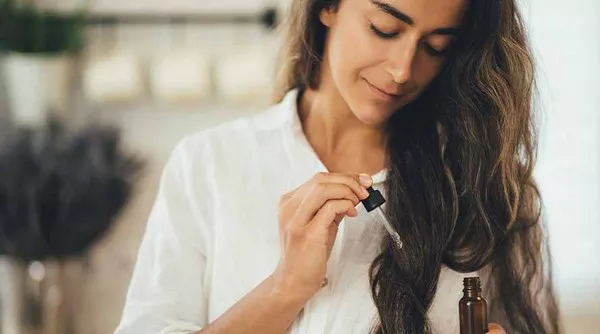Radiant Locks:
A luscious and voluminous mane is not only a symbol of beauty but also an indicator of hair health. This comprehensive guide shares 20+ tips and tricks to help women achieve healthier, fuller hair through effective hair care practices.
1. Understanding Your Hair Type
Tailoring Your Routine:
Diverse Textures: Women have various hair textures, from straight and wavy to curly and coily. Understanding your unique hair type is crucial for selecting suitable products and adopting personalized care routines.
2. Selecting the Right Shampoo and Conditioner
Essential Choices:
Shampoo Varieties: Choose a shampoo that addresses specific needs—whether it’s volumizing, moisturizing, or color-protecting. Pair it with a conditioner tailored to your hair type for optimal nourishment.
3. Optimal Frequency of Washing
Balancing Act:
Individual Needs: The ideal frequency of hair washing varies for each woman. Factors like hair type, lifestyle, and scalp condition influence how often you should wash your hair for a balanced and healthy routine.
4. The Art of Scalp Massage for Circulation
Stimulating Growth:
Enhanced Blood Flow: Regular scalp massages stimulate blood circulation, promoting hair growth. Gently use your fingertips to massage the scalp, encouraging the delivery of nutrients to the hair follicles.
5. Gentle Towel Drying Techniques
Preventing Breakage:
Minimizing Friction: Instead of vigorous rubbing, pat your hair gently with a towel. This reduces friction, preventing hair breakage and minimizing frizz.
6. Protective Hairstyles for Healthy Hair
Minimizing Tension:
Comfortable Styles: Tight hairstyles may stress hair follicles, leading to breakage. Opt for looser styles to minimize tension, preserving the health of your strands.
7. Effective Heat Styling Precautions
Cautious Styling:
Using Heat Protectants: Apply a heat protectant before using styling tools to shield your hair from damage. Choose the lowest effective heat setting and avoid excessive styling to maintain optimal hair health.
8. Regular Trimming for Preventing Split Ends
Maintaining Vibrancy:
Scheduled Trims: Regular trims prevent split ends and maintain overall hair health. This practice contributes to a fuller and more vibrant appearance.
9. Balanced Diet for Hair Wellness
Essential Nutrients:
Protein and Vitamins: A balanced diet rich in protein, vitamins, and minerals is essential for healthy hair. Include foods like eggs, fish, nuts, and leafy greens to support hair growth.
10. Hydration for Hair Moisture
Internal and External Hydration:
Drinking Water: Staying hydrated is crucial for overall health, including hair. Additionally, use hydrating hair products to maintain external moisture.
11. Avoiding Excessive Use of Hair Products
Minimalist Approach:
Product Buildup Risks: Using excessive styling products may lead to buildup, affecting hair health. Embrace a minimalist approach, selecting products tailored to your hair type and styling needs.
12. Protection During Sun Exposure
UV Defense:
Hats or SPF Products: Shield your hair from UV damage by wearing hats or using hair products with SPF. Sun exposure can result in dryness and color fading.
13. Post-Workout Hair Care Routine
Sweat Management:
Rinsing After Exercise: Rinse your hair after workouts to remove sweat and prevent scalp issues. Use a mild shampoo if needed and avoid letting sweat sit on your scalp.
14. Satin or Silk Pillowcases for Reduced Friction
Preventing Breakage:
Gentle Sleep Surface: Satin or silk pillowcases reduce friction, preventing hair breakage and minimizing bedhead.
15. Incorporating Hair Masks and Treatments
Deep Nourishment:
Regular Treatments: Include hair masks and deep-conditioning treatments in your routine to nourish and revitalize your hair. These treatments offer intensive care and repair damaged strands.
16. Stress Management for Optimal Hair Health
Mind-Body Connection:
Stress Impact: High stress levels can contribute to hair loss. Engage in stress-management techniques like meditation or yoga to promote overall well-being, including hair health.
17. DIY Natural Hair Rinses for Added Shine
Homemade Elixirs:
Apple Cider Vinegar Rinse: Consider natural rinses like apple cider vinegar diluted with water for added shine and scalp health. These DIY solutions can be gentle and effective.
18. Incorporating Essential Oils for Aromatherapy
Aromatherapy for Hair:
Oil Choices: Essential oils like lavender, peppermint, or rosemary can be added to carrier oils for a soothing scalp massage. These oils may stimulate hair growth and enhance the overall health of your hair.
19. Regular Exercise for Circulation
Blood Flow Benefits:
Cardiovascular Activity: Regular exercise improves blood circulation, benefitting hair health. Engage in activities like jogging, swimming, or cycling to promote overall well-being.
20. Professional Guidance and Hair Care Routine Adjustment
Expert Consultation:
Hair Professionals: Seek advice from hair care professionals to tailor your routine. They can recommend personalized products and adjustments based on your unique hair needs.
Frequently Asked Questions
Q1: Can certain hairstyles contribute to hair loss in women?
Hairstyle Impact: Yes, tight hairstyles like braids or ponytails may cause tension on the hair, potentially leading to hair loss. Opt for looser styles to minimize stress on the strands.
Q2: Are there specific shampoos for color-treated hair?
Color-Protecting Shampoos: Yes, specialized shampoos for color-treated hair help maintain vibrancy and prevent color fading. Look for sulfate-free options for optimal care.
Q3: How can women address dandruff and scalp issues?
Dandruff Solutions: Use anti-dandruff shampoos containing ingredients like zinc pyrithione or tea tree oil. Maintain scalp hygiene and consult a dermatologist for persistent issues.
Q4: Can diet impact hair growth for women?
Nutrition’s Role: Absolutely. A balanced diet with adequate protein, vitamins, and minerals supports healthy hair growth. Nutrient deficiencies can contribute to hair-related problems.
Q5: How often should women change their hair care routine?
Adapting to Needs: Hair care routines may need adjustment based on seasonal changes, lifestyle shifts, or changes in hair condition. Regularly assess your routine for optimal results.
Q6: What are the benefits of satin or silk pillowcases for hair?
Reduced Friction: Satin or silk pillowcases reduce friction, preventing hair breakage and minimizing frizz. They also help retain natural oils, contributing to smoother and healthier hair.

